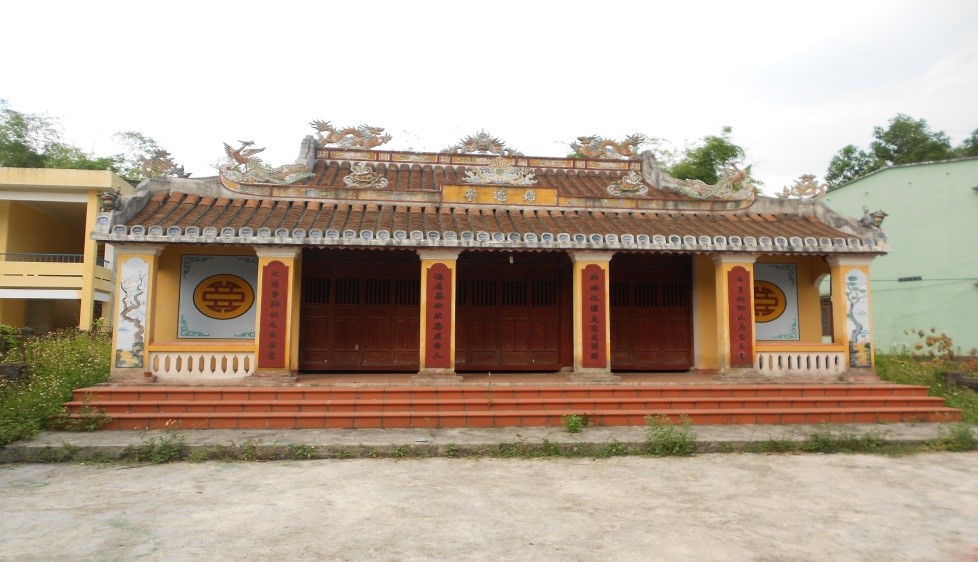Cam Toai village communal house preserves many cultural and historical values
Like many other villages in Viet Nam, Cam Toai Village in Da Nang also has an eponymous communal house that serves community activities and meets the spiritual needs of local people.
 |
| The Cam Toai village communal house. Photo: Doan Gia Huy |
Initially, the communal house was made of bamboo to worship the native God and ancestors of all clans in the village. By the 19th century, villagers contributed their labour and money to build the communal house as it is today.
Through periods, the Cam Toai communal house witnessed many historical events associated with local revolutionary movements. Therefore, it has great cultural and historical values.
According to local documents, Cam Toai is one of the villages with a long history in Da Nang. Before the August Revolution of 1945, Cam Toai was one of 16 villages of An Phuoc Canton, Hoa Vang District, Quang Nam Province.
Cam Toai villagers in the past were diligent, patriotic and studious. Many clans were famous for studious activities such as Lam, Phan and Le. Typically, Mr. Phan The Khanh was instrumental in founding the two communes of Cam Ne and Cam Toai, becoming one of the sages of Cam Toai village.
Through the country's historical periods, Cam Toai village communal house was the place where many meaningful historical events took place.
In 1935, the place was the secret headquarters of a group of anti-imperial youth. Accordingly, the anti-imperial youth group organised opera practice and performances at the communal house to raise money to expand the An Phuoc school and spread the national language.
From 1936 onwards, the performance of the anti-imperial group was increasingly expanded. Therefore, in addition to the main meeting place at the Cam Toai communal house, there were also two other secret locations at the houses of Mr. Nguyen Nghiep and Mr. Le Dinh Hien.
The Cam Toai communal house was also the place to organise the election campaign for Mr. Dang Thai Mai to replace Mr. Phan Thanh in the Central Assembly.
In 1942, under the strong influence of the Viet Nam League for Independence or the Viet Minh Front, Cam Toai communal house was a gathering place for young people who were participating in local revolutionary activities and some young people studying at schools in Hue and Quy Nhon. The young people often gathered at the communal house to practice and perform many plays in order to spread the patriotic spirit among the masses.
Cam Toai communal house was chosen as the headquarters of the Provisional Revolutionary People's Committee of An Phuoc General.
From September 1945 to February 15, 1946, the place received tonnes of rice for famine relief and preserved large quantities of brass donated from communes.
During the early days of the nationwide resistance war against the French colonialists (December, 1946), the People's Committee of Da Nang moved documents to the Cam Toai village communal house for a while before moving to a new location.
Battalion 17 and Regiment 96 were stationed here for a period of time to consolidate its forces before moving elsewhere. In 1947 and 1948, Cam Toai village communal house was sabotaged by the French invaders. During the resistance war against the US, Cam Toai villagers tried to preserve the communal house's rear, and rebuild the collapsed vestibule as a place of worship and organising annual cultural festivals.
The Cam Toai communal house was recognised as a municipal-level historical and cultural relic by the People's Committee of Da Nang in 2007. Every year, a number of worshiping rituals are held at the venue to commemorate ancestors who had contribution to the village, and at the same time pray for a year of favourable weather and bumper crops.
Reporting by DOAN GIA HUY - Translating by M.DUNG